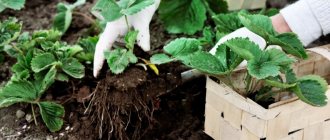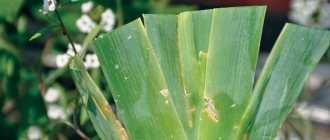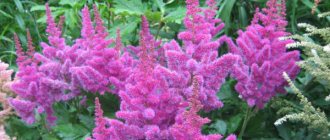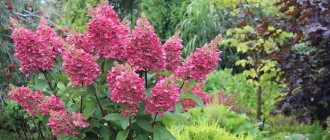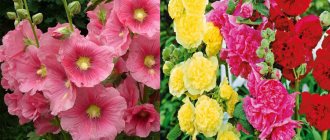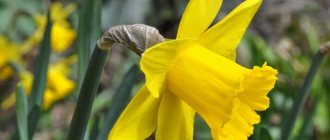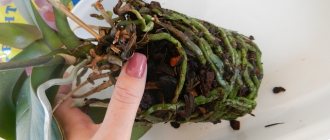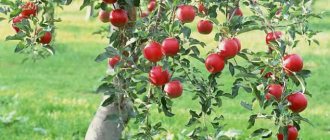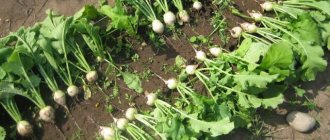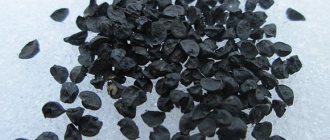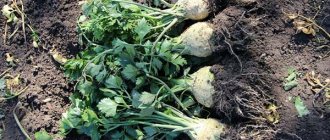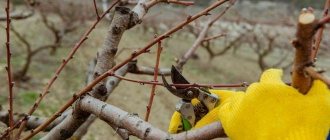Pruning strawberries in the fall for the winter is the key to a good harvest in the spring. The method has been tested by experienced gardeners. Our article contains all the useful tips for beginning gardeners on caring for delicious berries. We will answer the most popular questions: is it necessary to prune strawberries in the fall and how to do it correctly.
After the end of the fruiting period, strawberries require special care and careful treatment. Berry bushes need to be prepared for winter. One of the effective methods of caring for strawberries in the fall is trimming leaves and tendrils.
Advantages and disadvantages
Pros:
- Without extra leaves and tendrils, it is easier for the berry to survive the winter. The roots are hidden in the ground, and the stems are well covered with warm, waterproof material.
- The root system will receive maximum nutrients. The plant does not need to waste energy on foliage.
- Pruning eliminates the place for larvae, colonies of adult pests, fungal spores, and infectious bacteria to live.
Thus, by removing excess tops, gardeners solve several problems. Strawberries are insured against freezing and disease infection. The bushes overwinter in a lighter state, the berry crop rests so that in the spring it is completely ready for the new fruiting season.
Minuses
- The buds of future fruits are removed along with the tops. In spring, the berries will ripen only on young shoots.
- The harvest will appear later, since Victoria will need time to restore the green part of the bush.
- Pests are not afraid of pruning - most types of bugs and aphids overwinter in the ground.
To accurately understand whether strawberries need to be pruned for the winter, conduct a simple experiment. Divide the bed or plantation into 2 parts. Cut one, leave the other overwinter with leaves. The summer harvest will help you draw the right conclusion.
Autumn pruning: pros and cons
Supporters and opponents of pruning agree that young plants that have never wintered before not only do not need it, but can also be harmful. And it is better to dig up bushes that have been bearing fruit in one place for more than 4-5 years and replace them with young ones, planting them in a new bed.
And the debate is about adult plants at the most productive age - from 1 to 3-4 years.
Positive results of pruning
Supporters of autumn pruning of garden strawberries are based on the following positive aspects of this procedure.
- Destruction of diseased, dry and old leaves that are unable to perform their function. In their place, young greenery grows with a high capacity for photosynthesis.
- Along with diseased leaves, microorganisms that cause various strawberry diseases, as well as mites and other harmful insects and their larvae, are removed from the garden bed.
These leaves should not be left in the garden.
- Complete pruning allows you to assess the condition and age of the bushes, and, if necessary, remove excess ones in order to thin out the thickened berry patch and provide the remaining plants with better nutrition and ventilation.
- Dense foliage during prolonged autumn rains retains a lot of moisture in the garden bed, which can lead to plant rotting.
- It is more convenient to loosen, fertilize, and mulch the soil that is exposed after pruning.
Strawberry bed after pruning
- Bushes preparing for winter do not waste energy on old leaves.
Its opponents also agree that complete pruning is necessary if the aboveground part of the plants is affected by various fungal infections (powdery mildew, gray rot, brown spot, etc.). After mowing, the foliage is burned, and the soil and growing young leaves are treated with insecticides and fungicides.
Advice! Disinfecting treatment of strawberry plantations in the fall should be carried out regardless of pruning and whether there are signs of disease on the leaves.
Negative pruning results
Opponents of pruning believe that:
- along with the leaves, there is a risk of cutting off or damaging the buds that are being laid for next season’s flower stalks, which will have a bad effect on plant productivity;
More on the topic: Mulching materials for strawberry beds
Deep pruning can harm plants
- the leaves left serve as shelter from the cold for the surface roots of the strawberries and trap snow in the garden bed;
For reference. This argument is especially relevant for remontant strawberries, which, due to late fruiting, go into winter weakened and not prepared for severe frosts.
- Removing old leaves stimulates the plant to grow new, young greenery, on which they spend extra energy and do not have time to prepare for the cold.
To trim or not
You will have to answer this question yourself. Many gardeners use the partial pruning method, cutting out only flower stalks, tendrils, diseased, old and dry leaves, and leaving healthy ones. With a large planting area, this method takes a lot of time and effort.
When partially pruned, young leaves are left
The complete pruning method is sometimes used to rejuvenate the berry garden without transplanting the bushes to another bed. But this is a temporary measure, which is justified only in cases where you do not have a place for transplantation or you did not have time to prepare it this season.
To understand which option is more correct, we recommend cutting off some of the plantings in the fall and leaving the other part untouched. And see next year where the plants will feel better after winter, and which bed will have a higher yield.
Deadlines
Carrying out pruning at an optimally comfortable time for the plant increases the effectiveness of the care method. Focus on the following factors:
- The crop must finish bearing fruit completely.
- The air temperature at night is still above zero.
- The young leaves have not yet had time to grow.
- The weather is dry and warm. On the day of pruning there is no rain, the sun is shining dimly.
- When to prune strawberries in the fall, namely in what month, depends on the climate zone. For the Middle Zone, the Urals, the Moscow region and the Leningrad region, this is the period from late August to mid-September . For Krasnodar - until the beginning of October, for Siberia - until September 10.
Important! You need to trim the tops of strawberry bushes in the morning or evening. Daytime is not the best option.
Timing of pruning
Supporters of the process also do not have a common opinion regarding the timing of the manipulations. It is customary to begin removing foliage no later than 2 weeks after the end of fruiting. The bushes should have 2 months left to build up young green mass and prepare for winter.
Related article:
Advice for gardeners who are planning to change their strawberry location
In the southern regions, pruning begins at the end of June. In the northern regions, in the Urals, gardeners begin the process no earlier than July. If the tops are removed in early August, the manipulations are handled sparingly, removing only diseased and dead leaves.
It is generally not recommended to prune remontant strawberries. It bears fruit all summer long, so only flower stalks and diseased areas are removed from the bushes. Remontant varieties are easily injured, which can negatively affect the harvest next season.
How to trim correctly
Young, inexperienced gardeners have a lot of questions about the technique of cutting leaves on strawberries in the garden in the fall. We will answer everything in order.
Preparing tools
You will need high-quality scissors or pruners. You need to prepare the tools like this:
- Sharpen the blades thoroughly. If the pruner tears the leaf, the plant will suffer greatly.
- Treat your tools with hot water or any antiseptic to avoid introducing infection to the berry bushes.
Important! Don't skimp on purchasing quality professional equipment. Expensive tools have served gardeners for decades.
Leaf trimming
Now we’ll learn how to properly prune strawberries in the fall so that next year’s harvest will be rich and the bushes will not die from frost. Proceed according to the following algorithm:
- Water the bushes every day for a week before pruning.
- Clear the garden bed of debris and weeds.
- Take one bush in your hands.
- Lift the top leaves up and pinch them against the stem.
- Cut the tops, removing all the old leaves, try not to touch the new young ones. There should be sprouts 10 cm high in the flowerbed.
- Collect the cut leaves and place them in a compost bin.
- If you see signs of diseases or fungi on the tops, burn them.
- Treat the garden bed with disinfectants and prepare the crop for wintering.
Important! It is impossible to prune young seedlings (first-years) for the first wintering. Their tops and stems are preserved as much as possible for continued growth.
Mustache trimming
It is necessary to carry out if the Victoria has grown greatly, and you do not plan to increase the area of the bed. Remove them as follows:
- Gather your Victoria's mustache into a bun.
- Cut off any old, dried tendrils with scissors.
- Proceed carefully.
- Leave 1-2 runners with rosettes for minimal reproduction in the spring.
What not to do
Typical mistakes of inexperienced gardeners lead to the loss of the plantation and the death of a large percentage of bushes, which means a decrease in yield. Be careful not to do the following:
- Tear off the leaves with your hands. At this moment, the root system of the crop is damaged. In the spring, many of these bushes will die.
- Trim the bushes to the roots.
- Mow the bed without taking into account the height of the Victoria bush. A scythe is not the best tool for cutting berry stems. Mowing is considered an easy but barbaric method. All elements of the bush are removed, which harms young shoots.
Pruning strawberries in spring, autumn and summer
Strawberries belong to those crops that quickly grow in free soil without the attention of the gardener. That is why pruning strawberries in the spring is one of the mandatory measures for caring for the crop. Without pruning, the bushes will grow quickly, and it will be difficult to form a neat bed.
There is a certain scheme for pruning strawberries, and we will describe it in detail in this article. You will also learn what autumn pruning is used for and how to carry it out correctly, and photos and
Pruning strawberries in spring
The main purpose of pruning strawberries in the spring is to renew the bushes after winter. If the winter was cold and with little snow, some shoots of the crop may freeze and must be removed immediately so that the plant does not waste its vitality.
In addition, in the spring, bushes are inspected for diseases, and if signs of pathology are found, damaged bushes or individual shoots are removed and burned.
What is it for?
This procedure involves removing all leaves in the fall to enhance root formation.
Note: Gardeners are divided on whether it is worth thinning out their bushes in the spring. You have to make this choice yourself. To do this, you need to consider all the pros and cons.
The positive factors of spring pruning include (Figure 1):
- It promotes the development of the root system. After removing the stem, all useful substances are found only in the roots, thereby thickening them and saturating them with minerals, vitamins and macroelements necessary for wintering.
- The bushes become more winter-hardy. Many gardeners believe that after thinning the leaves, the plant tolerates frost better.
- Using this procedure, all pathogens and pests that are on diseased and dried leaves are removed.
Figure 1. Stages of crop pruning
Now let's look at the disadvantages of spring pruning. Firstly, during the process of removing shoots and leaves, most of the pests fall to the ground and overwinter. Many die under the influence of frost, so it is better to remove frozen leaves in the spring than in the fall.
Secondly, the generative buds from which the fruits develop are removed during thinning. After all, the buds for next year are laid in the fall.
Thirdly, after spring cleaning, the bushes take longer to form. This is due to the fact that due to the improved root system, the green mass will take a long time to accumulate, as a result, fruiting occurs later.
In any case, to avoid negative consequences, the procedure should be carried out very carefully, trying not to touch the axil of the upper leaves. Thus, you will have a rich harvest, and the bushes will fully develop.
When to prune strawberries in spring
Experienced gardeners have not come to a consensus on when it is best to prune strawberries. Some believe that it is better to carry out this procedure in the spring, others in the summer, and still others prefer such work in the fall.
One way or another, in the month of March, each bush must be thoroughly cleaned of diseased and frozen branches, as well as those on which spots or pests are visible. Foliage that lies on the ground must also be removed. Carrying out such work in the spring will not affect the harvest in any way, but pest control will be carried out.
Should strawberries be trimmed in the spring?
Whether or not you need to trim the mustache in the spring depends on whether you plan to propagate a certain variety or not. If your goal is to get a high yield, it is enough to remove the formed shoots in a timely manner (Figure 2).
Note: Whiskers appear on the bushes immediately after flowering. There are not many of them at this time. Whiskers begin to appear en masse after fruiting. It is better to remove the mustache in the spring before flowering and in the fall, after harvesting.
The mustache should be cut on a dry, windless day in the early morning or late evening. They are removed with pruners or scissors, but not torn off, since the tendrils are very strong and can damage the bush or its root system.
Pruning remontant strawberries
Many gardeners believe that remontant strawberries do not need special care and insulation for the winter, but in vain. Use tips on how to prune strawberries in the fall for small-fruited varieties and this unpretentious type of berry. Be sure to remove flower stalks. Don't forget to carefully cover the bed with winter insulation to prevent the bushes from freezing.
This is interesting! The issue of mowing strawberry bushes before hibernation is often discussed on forums. The following arguments are given in favor of mowing: treatment against pests after trimming the leaves is more effective, the medicines get directly into the ground and do not linger on the stems and tops; cut greens can be used as mulch.
When and why do you prune strawberries?
Strawberries, or garden strawberries, require repeated pruning throughout the season. Depending on the time of year, the goals of this event will be different:
- in the spring after the snow melts - corrective to remove dry, frozen and damaged leaves. Partial pruning, followed by treatment with fungicides;
- in the summer, immediately after fruiting - to rejuvenate the bush, so that the strawberries can rest after the hard “work” of growing sweet berries and grow new healthy, strong foliage before the cold weather. Cut off all leaves and tendrils (which do not need to be rooted);
- in the fall before frosts - sanitary ones to remove diseased, dried and pest-infested leaves, as well as flower stalks. Partial pruning of leaves and newly grown tendrils is carried out, then spraying with antifungal drugs.
In autumn, only damaged and diseased strawberry leaves, as well as dried flower stalks, are pruned.
Sometimes summer and autumn pruning is not carried out. This applies to remontant strawberry varieties and those bushes that are grown as an annual crop (usually on large farms).
Caring for the bed after pruning
After pruning the strawberries, you need to take care of the garden bed: loosen it, fertilize it and insulate it for winter. The scheme of agrotechnical actions is as follows:
- Water the flowerbed with trimmed bushes with warm water. If it's not cold, then every day. It is better to use drip irrigation, irrigating the soil from a watering can with a fine nozzle.
- Treat the soil under the crop with chemicals against pests and diseases. Destroying bugs hidden in the ground will protect against their reproduction in the spring.
- Loosen the soil before applying fertilizer. Pay special attention to the row spacing: here the soil can be lifted 10-15 cm with a small hoe or spatula.
- Feed with organic matter. Use mullein. Pour fertilizer under the roots, between the rows.
- Warm the soil before the onset of cold weather. Use shelters made of straw, pine paws, hay, or a special covering film.
Fertilizing strawberries. Autumn feeding
Fertilizing strawberries in the fall is an important process. Fertilizer application is also necessary if spring planting is planned. For this you need to prepare a mixture of chicken manure. This fertilizer can burn plants, so the mixture is prepared in certain proportions or left to sit. Chicken droppings are laid out on the bed between the rows. Such fertilizing will not only saturate the soil with essential microelements, but also prevent the appearance of a large number of weeds.
You should also pay attention to other feeding methods:
- Chicken manure can be diluted with water in a ratio of 1*10. The mixture must ferment for 10 days. It is not recommended to use it immediately due to its aggressive effect on plants. Strawberry or garden strawberry bushes may burn.
- Potassium humate and superphosphate are added to the soil immediately before mulching for the winter. They take a long time to dissolve, so they are used in advance.
- For the winter, you need to make mulch for the garden bed from a mixture of peat, sawdust and straw. Fallen leaves are also suitable for these purposes. During the winter, all components rot and a sufficient amount of nitrogen enters the soil.
- Autumn feeding of strawberries can be done using mullein. It needs to be diluted with water in a ratio of 1 to 10. After a few days, the composition is ready for use. Immediately before watering, 100 milligrams of ash are added to it.
- Yeast is often used as fertilizer. They contain fats, proteins, carbohydrates and nitrogen. Add 100 grams of yeast to 2 liters of water. The resulting starter is diluted in 8 liters of water. After 5 hours, treatment can be carried out in the root zone.
- Ash is considered a good fertilizer. With its help you can normalize the acidity of the soil. Ash components contribute to the rapid breakdown of fertilizers. The root system of plants becomes stronger. The fertilizer also fights pests and prevents the emergence of species-specific diseases such as gray rot. Before use, the ash must be sifted. You will need quite a lot of it, 150 grams per square meter.
- After pruning, manure is placed in the rows. This arrangement will avoid root burns and provide a sufficient amount of nitrogen to the plants.
Aftercare
When the garden bed is in order, it is worth carrying out preventive spraying against diseases and pests.
Most often strawberries are attacked by:
- weevil;
- thrips;
- aphid;
- whitefly;
- strawberry mite;
- slugs;
- leaf beetle
Attention: by autumn there are no more adults on the bushes, but pupae, larvae and eggs remain.
Loosening destroys their shelters in the soil, and spraying makes the above-ground part of the plants safe. Watering with a solution of wood ash or sprinkling with ash powder is effective against fungal and bacterial infections.
It is impossible to complete such work at once; you will have to devote several days to the strawberries. The finishing touch will be mulching with sawdust, chopped bark, straw or spruce branches, which will retain moisture and protect the plants from freezing in a cold winter with little snow.
Do remontant varieties need to be pruned?
Remontant strawberries are distinguished from regular ones by the timing of fruiting. It produces a harvest twice a season, and some varieties last the whole summer. Therefore, a radical haircut is not carried out for this crop.
Nevertheless, plantings also need thinning, rejuvenation and preventive procedures. The bushes are regularly inspected, removing old, diseased or dry leaves as necessary. If you do not plan to propagate remontant strawberries with mustaches, trim them too.
The last flower stalks that will no longer bear fruit must be cut off in the fall. Otherwise, they will take too many nutrients from the plant.
Watering and fertilizing strawberries after fruiting
Summer residents begin to carry out the first work to prepare for the coming frosts immediately after the end of the fruiting period, in most cases without even knowing it.
They continue to water the beds, feed the bushes that have spawned, and remove the tendrils. For what? In order for the strawberries to remain healthy, not to be attacked by pests, to be able to lay a good harvest for the next season and to successfully overwinter. No one has denied the simple truth: a strong strawberry bush is not afraid of any frost. Therefore, we advise you under no circumstances to leave the beds to the mercy of fate after picking the berries and until the fall. Keep watering them if the weather is dry. And don't forget about autumn feeding. We looked at options for such feeding here:
Strawberry processing
Pre-winter treatment of strawberries from pests and diseases is ridding the bush of existing problems and prevention for the future harvest. The best time to carry it out is August, after the last harvest of berries.
From diseases
The most common disease is spotting. You can get rid of it using a 1% solution of Bordeaux mixture.
Do the following:
- Dissolve 100 g of the active ingredient in 2 liters of water. It is better to use warm liquid with a temperature of up to 50º.
- Mix the contents thoroughly until a homogeneous solution is formed.
- Fill with cold water to a volume of 5 liters.
- In a separate container, combine lime according to the instructions so that the total amount is 5 liters.
- Mix 2 solutions. It is better in a plastic or enamel container, because in a metal container the oxidation process will begin.
Spray the strawberry bush with the resulting solution. Should be used immediately after preparation. Apply in the morning, evening or in cloudy, dry weather during the day. If it rains after carrying out the procedure, repeat the procedure.
From pests
The most common strawberry pests are spider mites.
You can get rid of them, as well as other insects, as follows:
- Dilute 2 tbsp in 10 liters of water. l. vegetable oil and the same amount of wood ash.
- Pour in 2 tbsp. l. vinegar.
- Pass 20 g of soap (preferably laundry soap) through a grater. Add 2 tbsp. l. component to the general content. It is allowed to take 2 tbsp. l. liquid soap.
- Mix the fertilizer thoroughly until a homogeneous consistency is obtained.
Spray the bushes and the soil around them with the solution. Do the treatment in early October (2 - 3 weeks before the expected cold weather).
Trimming technology
Green leaves and buds cannot be trimmed
If you choose autumn to prune strawberries, it is extremely important to leave the green leaves and buds intact.
Only damaged, old and dry foliage must be removed (a diseased leaf is easy to identify by color - it becomes yellowish, brown or brown). In addition, the procedure should include trimming the mustaches, since they take a lot of nutrients from the bushes and thicken the beds.
Errors:
- You cannot cut the entire rosette down to the base - you only need to trim the leaf blade without touching the stems.
- It is forbidden to tear off leaves, flower stalks and tendrils with your hands - they are firmly attached, so there is always a risk of pulling out the bush with its roots.
For cutting, you need to take a convenient pruner or garden shears. The tool must be clean and well sharpened.
For greater benefit, when pruning, pull out weeds, loosen the rows and hill up the bushes as necessary.
Preparing for winter
The key to a future bountiful harvest is preparing the bushes for the winter. Plants must gain strength, have good immunity, and not carry fungal spores or pest larvae with them.
Therefore, special attention is paid to autumn events. They begin in late August - early September.
Feeding
It is recommended to fertilize in 2 stages.
The first deposit is in September. Combined mineral-organic mixtures or complex fertilizers based on potassium and phosphorus are used.
The second - in October, before frost. It is better to use long-acting granular forms. They will strengthen the bushes and provide an incentive for growth after awakening.
Preference is given to complex drugs, such as Kristallin, Kemira-lux, Sortvorin.
Important: nitrogen is not added. It provokes the awakening of buds and the growth of green mass, which is not necessary in the fall.
Watering
It is recommended to water strawberries in the morning.
During the ripening period, the bushes need a lot of moisture, and after removing the leaves, the frequency of watering is gradually reduced so as not to awaken the buds formed for the next year.
In August and September, water 1-2 times a month, varying the frequency depending on the weather; it is better to allocate morning hours for this.
Frequent moisture can cause the appearance of gray rot. In October, only one heavy watering will be needed to create a supply of moisture in the soil.
Mulching
warms the roots, maintains an optimal level of moisture. Straw and sawdust are used; in the northern regions, film or agrofibre can be laid on top.
For additional protection against rodents, use spruce branches or pine litter.
Any conifers repel small pests with the smell of resin.
